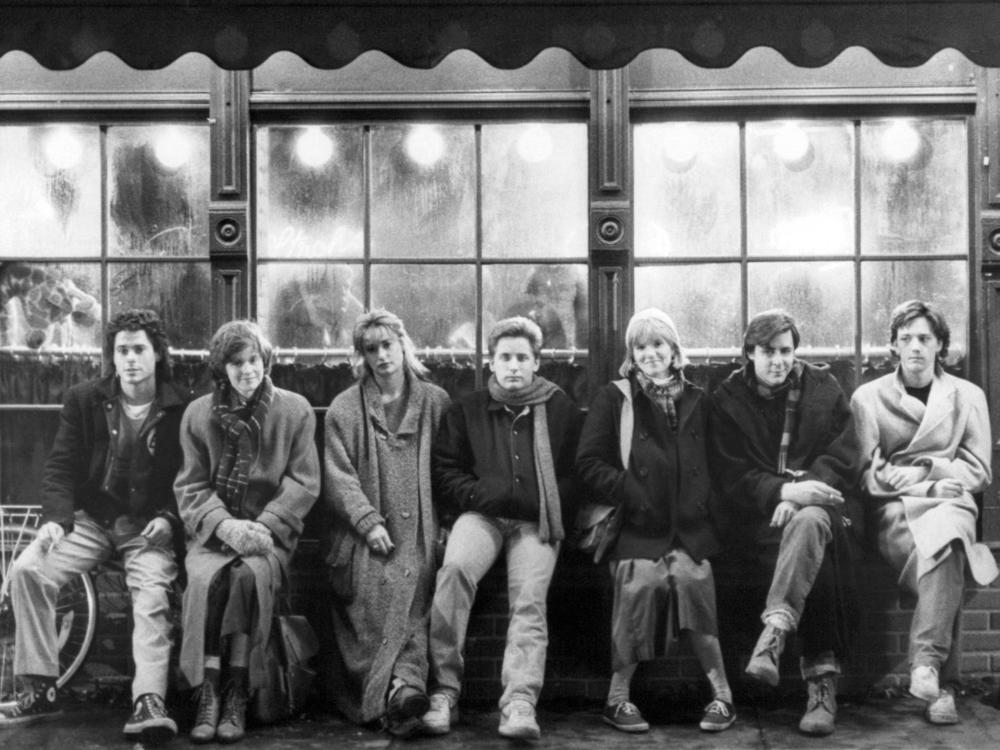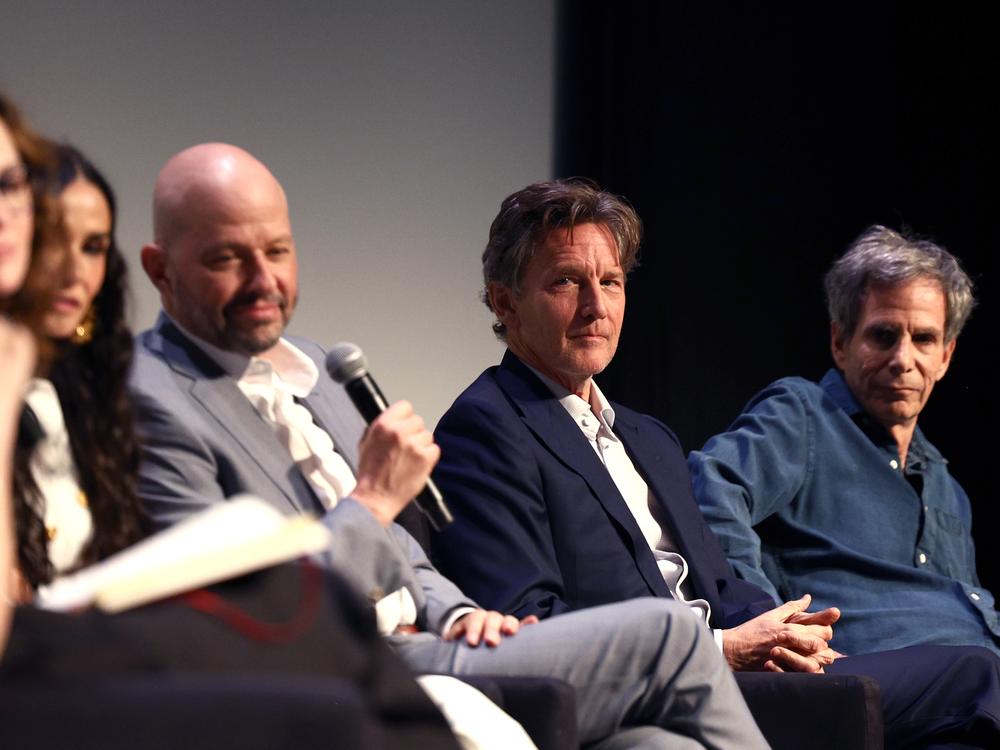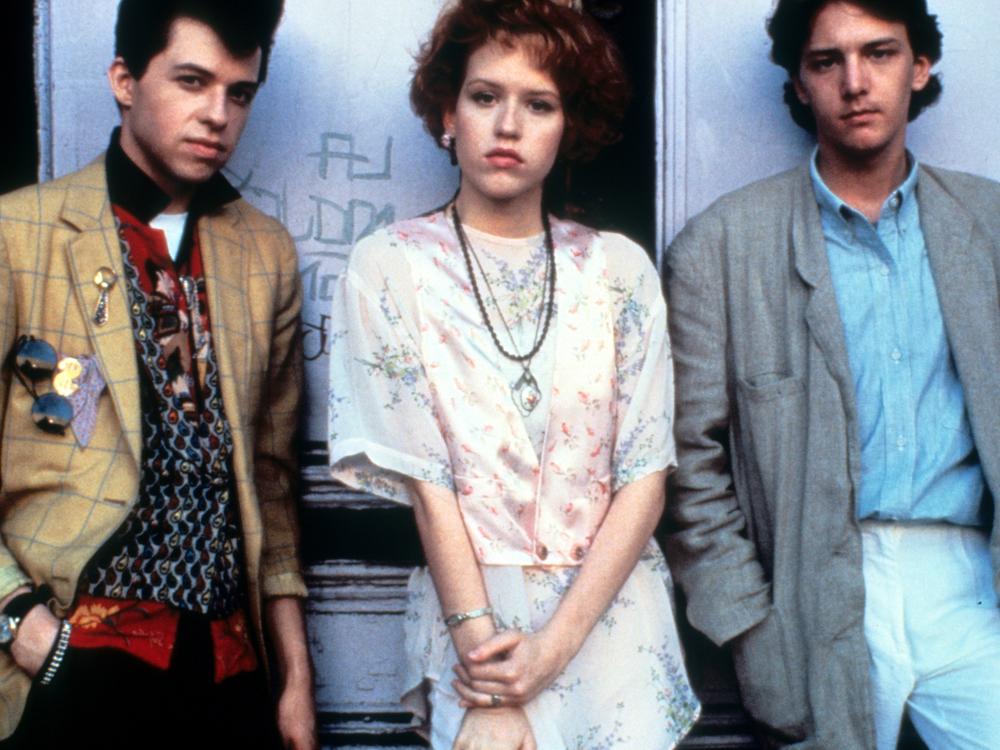Section Branding
Header Content
In 'Brats,' '80s stars grapple with a label that defined their early careers
Primary Content
How you feel about Andrew McCarthy’s searching, earnest, frequently self-important and occasionally clueless documentary about Hollywood’s so-called “brat pack” of actors — titled, somewhat self-consciously, Brats – may depend on what you think about the whole phenomenon in the first place.
Brats does a great job reminding us why we should care about the subject at all. It notes that the success of teen-focused films in the 1980s — specifically John Hughes films like The Breakfast Club and Pretty in Pink, along with Joel Schumacher’s St. Elmo’s Fire – represented a turning point where the film industry began to feature coming-of-age movies, often with the same group of young actors.
McCarthy, who was in both Pretty in Pink and St. Elmo’s Fire, joined a group of burgeoning talents who would become major stars, including Emilio Estevez, Judd Nelson, Demi Moore, Ally Sheedy, Molly Ringwald and Rob Lowe. The films they starred in — often featuring high school-age kids in various circumstances struggling to find love or acceptance — channeled the struggles of youth across the globe, turning them into Beatles–level stars in the process.
“Hollywood discovered the box office potential of a young audience,” McCarthy says in somber narration over clips from films as disparate as Risky Business, Dirty Dancing, Back to the Future, Footloose and Weird Science. “It seemed that every weekend, there was another movie and another movie and another movie about and starring young people. In the history of Hollywood, it had never been like this.”
Defining the Brat Pack
But then journalist David Blum wrote a story in 1985 for New York magazine titled “Hollywood’s Brat Pack,” centered on time spent partying with Estevez, Lowe and Nelson, that cast shade on the group — lumping them together as unprofessional and over-privileged, while sticking them with a moniker which would follow them all around for decades. (One line described them as “a roving band of famous young stars on the prowl for parties, women, and a good time,” shortly before noting none of them had graduated from college.)
McCarthy, who admits he aspired to be a particularly serious actor back then, really bristled at the term, refusing to talk about it publicly very much. In another delicious irony the film fails to explore, Blum’s original article refers to McCarthy in a way that implies the author may not have even seen him as a bona fide member of the Brat Pack back then — despite the actor’s insistence that the term affected how he was perceived in Hollywood.
Which why it is surprising to see footage of him at the start of Brats, calling up actors he was never very close to but has been professionally linked with for nearly 40 years — suggesting they get together in front of cameras for a documentary he is directing and will star in — to actually talk about this Brat Pack thing.
Estevez, who the article called “the unofficial president of the Brat Pack,” seems wary even in talking for the documentary, while eager to get some things off his chest. Relatively quickly, he apologizes for refusing to star in a movie with McCarthy shortly after the article was published, for fear of feeding the narrative.
“It was naïve of me to think this journalist would be my friend,” Estevez admits, while noting he had never participated in a major magazine profile before Blum’s story. “I had already seen a different path for myself. And I felt derailed.”
A movie with two messages
Scenes like this allow Brats to work on a few different levels at once. Through McCarthy’s own words and his catch ups with other Brat Packers like Estevez, Sheedy, Moore and Lowe, we get a sense of the people at the heart of a massive pop culture phenomenon.
This is a burgeoning genre in the documentary world: films and docuseries looking back at gigantic pop culture moments from decades ago, to reveal the unexplored cost for those at the center of things (think recent documentaries on Britney Spears and child stars on Nickelodeon). And there is value in hearing these performers, held up as legends for so long, grappling with the very understandable feeling they were stereotyped just as their careers were taking off.
“Why did we take [the term Brat Pack] as an offense?” Moore tells McCarthy earnestly in one moment. “I felt a sense of it being unjust. I just felt like it didn’t represent us…But I don’t know if I took it as personal over time as you did.”
Sheedy, Pretty in Pink co-star Jon Cryer and others talk about seeing the enthusiasm around these emerging stars suddenly curdle into insulting assumptions that dismissed their talents. And one of the elements which fueled their success — appearing together as a pack of friends in films — suddenly disappeared, as they all fled the stigma of the term.
But the other, perhaps unintentional effect of watching Brats, is revelation of how the sometimes clueless privilege these so-called Brat Packers enjoyed back then has stuck around, barely examined, decades later.
Balancing regret with gratitude
Making an impact in Hollywood is difficult. Starring in big movies, even more so. But starring in massive movies that are considered the voice of a generation? That is a once-in-a-lifetime opportunity.
But, instead of feeling gratitude for landing in the right place at the absolutely best time to land parts in films like Class, Less Than Zero, Weekend at Bernie’s and other hits, McCarthy seems to have spent way too much time fretting over whether the Brat Pack label kept him from larger stardom or more serious work. And it doesn’t seem a coincidence that the most successful Brat Packers McCarthy could get on camera — Moore and Lowe — long ago made their peace with a term that has evolved into a more endearing label, softened by nostalgia and filled with respect.
McCarthy asks a lot of good questions, including one that should be simple but really isn’t: Who is in the Brat Pack? Is it just the people Blum cites in his story — including Tom Cruise and Matt Dillon — or should it also include performers who worked with them around the same time, like Jon Cryer? (In Brats, Cryer tells the camera emphatically, “I am not in the Brat Pack.” It’s tough to tell if he’s joking.)
This film also breezes past something that was always a big sticking point for me when it came to Brat Pack movies — the decided lack of racial and ethnic diversity.
McCarthy talks to several fans, critics and experts about the Brat Pack phenomenon. But there is just one Black person who speaks briefly and very soothingly about these films’ lack of diversity, before author Malcolm Gladwell — who is biracial — pops up to assure the director that it made perfect sense for Hughes to center so many of his hit movies on angsty white kids in suburban Chicago.
For fans of color like me, there was always a double edge to the success of Brat Pack-style films. Many themes were universal, but there was a nose-pressed-to-glass element of watching celebrated characters in an environment light years removed from my own experience.
Characters of color, when they did surface, could be the butt of jokes. It would take the rise of Black directors like Spike Lee, Matty Rich and John Singleton to bring the Brat Pack’s youth revolution to Black-centered stories in much smaller films.
Bottom line: actors considered part of the Brat Park were packaged together in big budget films by producers and directors looking to tell certain stories and reach certain audiences. As several people tell McCarthy in the film, even after the article was published, lots of people thought the Brat Pack were still the cool kids in Hollywood – and wanted to be part of that club.
Many other talented performers got left out of that process. And complaining about what you didn’t get — when you did receive massive fame, wealth and career opportunities at an early age — feels a little uncharitable, especially so many years later.
Quizzing the guy who started it all
But then McCarthy actually sits down with the author of the New York piece, David Blum. And your sympathy for the actor and all the other Brat Packers rises again.
That’s because Blum mostly refuses to admit that his article was intentionally negative or sought to take down stars like Estevez and Lowe. He takes pride in creating the phrase, noting that he perhaps should have gotten credit for building the wave of publicity which helped make movies like St. Elmo’s Fire a hit.
But Blum takes little responsibility for how the piece’s negative tone might have impacted his sources — or the implications of writing, without any real warning, a story that seemed quite different from the original feature he had told Estevez he was assembling.
It’s obvious that the actors featured in Blum’s original piece have mostly done well for themselves, crafting careers that outpaced the label he gave them. But even as he’s ending the interview, McCarthy can’t help pushing for an apology — asking the writer, almost plaintively, “Do you think you could have been nicer?”
Nearly 40 years later, it still seems tough for McCarthy to admit that accepting the label and living well — both because of and in spite of it — is likely the best possible response. (He seems to handle it all much better in a recent guest essay for The New York Times.)
It’s also obvious that watching him inexorably led to that conclusion while making this film — a journey brimming with nostalgia, pop culture potency and a bittersweet look back at youthful times — makes for one seriously compelling documentary.



